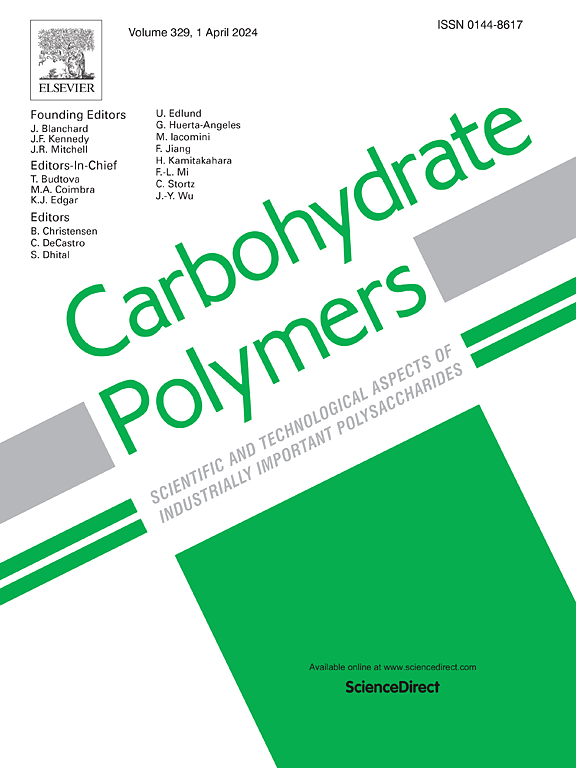Carbon dots and cellulose nanocrystal-incorporated chitosan composite films with enhanced gas selectivity and photodynamic antibacterial properties for fruit preservation
IF 10.7
1区 化学
Q1 CHEMISTRY, APPLIED
引用次数: 0
Abstract
Winter jujube is prone to rapid ripening and deterioration during postharvest storage and transportation. This study developed a multifunctional chitosan (CS) composite film incorporating dialdehyde cellulose nanocrystal (DCNC) and carbon dots (CDs) derived from walnut green husks. DCNC functioned as cross-linking filler, while CDs served as active nanofillers. The CS composite film containing 3 wt% DCNC and 3 wt% CDs (CS/DCNC/CDs-3 %) exhibited significant improvements in UV-blocking, mechanical strength, gas barrier, and thermal stability, attributing to the formation of a dense film structure and synergistic effect of Schiff base and hydrogen bonding interactions among film components. Notably, this composite film demonstrated a high CO2/O2 selectivity of 14.1, facilitating the creation of an ideal atmosphere inside the package. This composite film exhibited remarkable antioxidant activity and displayed potent antibacterial capacity through photocatalytic ROS generation, achieving inhibition rates of 90.8 % against S. aureus and 86.8 % against E. coli. Additionally, this film showed favorable biosafety and biodegradability, addressing food safety and environmental concerns. Postharvest preservation tests confirmed that this film assisted by light exposure effectively regulated physiological metabolism and delayed the ripening of winter jujube, highlighting its potential as an active modified atmosphere packaging material for perishable fruit preservation.

求助全文
约1分钟内获得全文
求助全文
来源期刊

Carbohydrate Polymers
化学-高分子科学
CiteScore
22.40
自引率
8.00%
发文量
1286
审稿时长
47 days
期刊介绍:
Carbohydrate Polymers stands as a prominent journal in the glycoscience field, dedicated to exploring and harnessing the potential of polysaccharides with applications spanning bioenergy, bioplastics, biomaterials, biorefining, chemistry, drug delivery, food, health, nanotechnology, packaging, paper, pharmaceuticals, medicine, oil recovery, textiles, tissue engineering, wood, and various aspects of glycoscience.
The journal emphasizes the central role of well-characterized carbohydrate polymers, highlighting their significance as the primary focus rather than a peripheral topic. Each paper must prominently feature at least one named carbohydrate polymer, evident in both citation and title, with a commitment to innovative research that advances scientific knowledge.
 求助内容:
求助内容: 应助结果提醒方式:
应助结果提醒方式:


